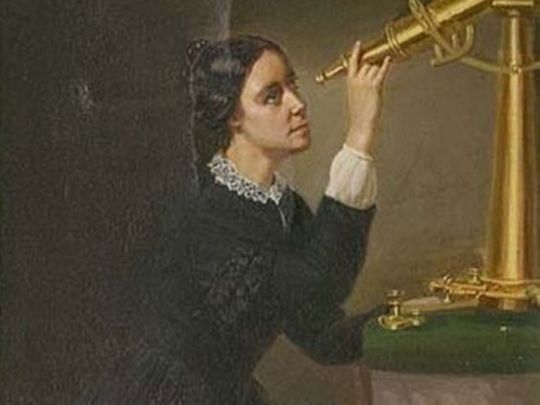
Almost every day for 10 years, an American named Maria Mitchell climbed to the rooftop of her childhood home on clear nights, to peer through her state-of-the-art telescope at the night sky. Each time, she would do it slowly and methodically. Diligently. She was looking for something.
Click start to play today’s Word Search, where the word “diligence” inspires this story of the first American, and probably first woman, to discover a comet.
On October 1, 1847, Mitchell excused herself from a dinner party and went on her nightly rooftop visit to scan the skies, when she finally saw it: A comet that would propel her to fame as the only widely recognised and respected female astronomer of her time.
As the third child of an astronomer and schoolmistress, Mitchell was used to living in an environment that encouraged learning and intellectual exploration. With her father’s help, Mitchell quickly learned to identify stars. She taught herself maths, using a relative’s extensive library. And when she was 17, she opened a school. Although small and with limited resources, it became immensely successful and led her to being appointed the librarianship at the local library – the Nantucket Atheneum in Massachusetts, US.
There, Mitchell gave herself the college education she never had. She spent hours devouring books and taught herself advanced astronomy. So when, years later, on that October night, she saw a shape streaking through the sky, she knew exactly what it was. With her father’s urging, she published a preliminary notice of her cosmic discovery on November 12, 1847. The comet was officially recognised on February 11, 1848, and was given the title “Miss Mitchell’s Comet” – the first to be discovered by an American.
But Mitchell wasn’t in it for the fame. As a scientist, she wanted to know what kind of comet it was, where it came from and how it left. So, she calculated her comet’s orbit – a difficult feat at the time, considering the fact that it was a hyperbolic comet (either falling into our solar system or being pushed out). The many variables involved meant it was challenging to calculate. But Mitchell persevered and published her findings in the astronomical journals of the time, further adding to her growing fame.
She became the first woman elected to the American Academy of Arts and Sciences and received a host of other positions and accolades, around the country.
Later in life, Mitchell used her voice to advocate for women’s education. She often spoke about how women should not be forced to study music (primarily the only formal education they received at the time), and asked people to imagine the potential of women if they were able to pursue something they were passionate about, rather than be forced to perform for entertaining guests.
According to US-based science news website Massive Science, Mitchell recognised the many barriers women of her time faced when pursuing science, and is known to have said: “No matter where you are nor what you are, you are a power – your influence is incalculable.”
Did you know about Mitchell? Play today’s Word Search and let us know at games@gulfnews.com.




